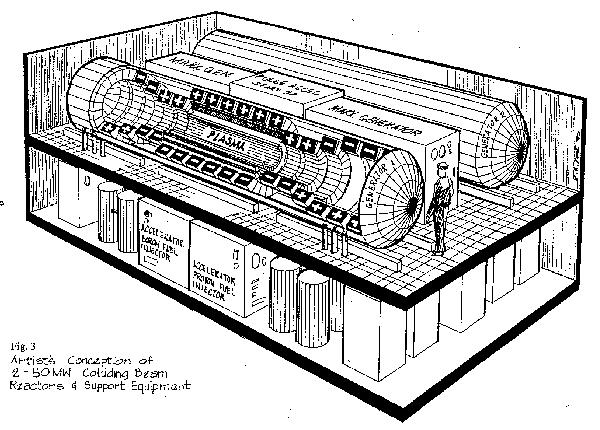In collaboration with Norman Rostoker from UC at Irvine, we have designed a novel type of fusion reactor, the Colliding Beam Fusion Reactor (CBFR). It uses protons (p) and boron-11 (11B) for fuel. Fusion reactions produce only three helium-4 (4He) nuclei, and nearly 9 million eV energy. Central to the design is the use of a so called Field Reversed Configuration (FRC) plasma. It has a cylindrical shape,rotates fast about its axis inside a solenoidal magnet, and thus produces a magnetic field that closes upon itself: a kind of self-confinement of fuel nuclei is established, with all confined particles flowing in the same direction. Protons rotate fast, with an energy of about 1 MeV, and 11B go slow such that the protons ‘rear-end’ the 11B with an energy at which the fusion cross section is highest.
We have found that plasma parameters can be set such that essentially all injected p and 11B undergo fusion to 4He and are guided into socalled Direct Energy Converter (DEC) devices. These devices turn their kinetic energy directly into electricity (no boiling of water, no steam, no turbines, no small thermal inefficiencies).
Several advantages result: abundant fuel supply, very little radioactivity, no danger of runaway reactions or explosions, scalability of size and output power, easier engineering and maintainability.
A multi-faceted study is underway to establish the full feasibility of the design. Most of the large scale calculations, theory development and nuclear polarization (to enhance the fusion reactivity) will be centered in this Physics Department. Experiments and engineering studies will be done at UC Irvine and the National High Magnetic Field Laboratory (NHMFL) in Tallahassee.
